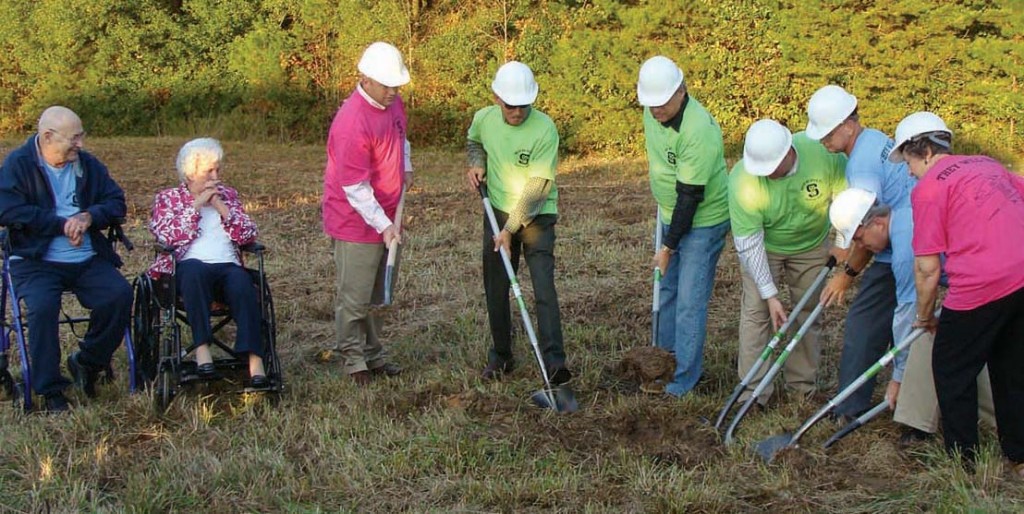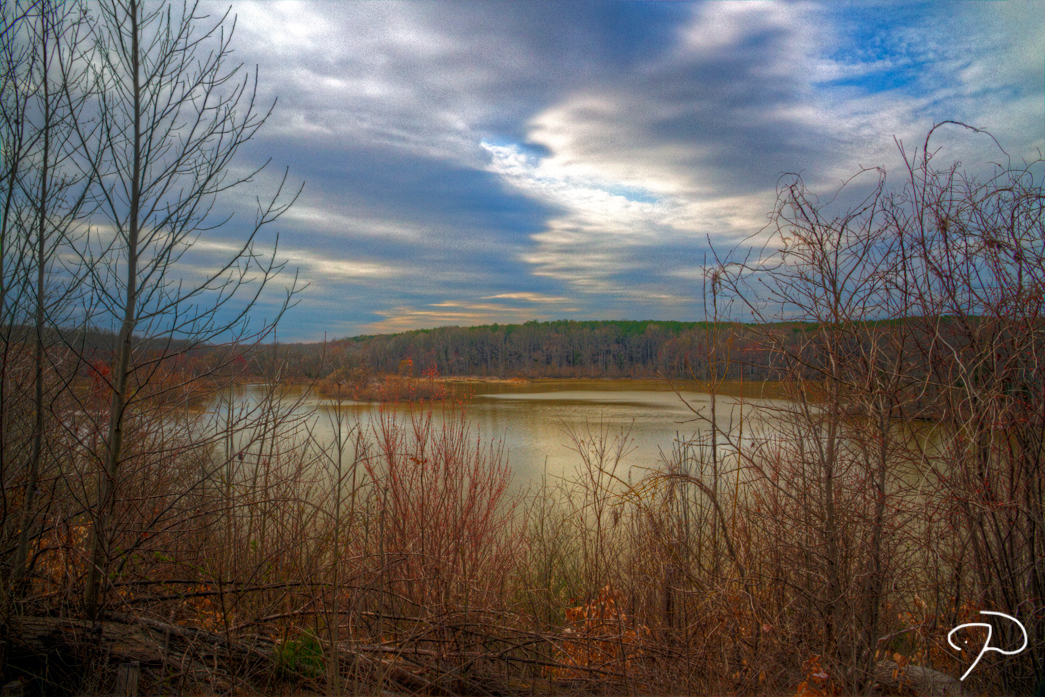Parks are essential elements of cities and neighborhoods that are primarily places for recreation, community gathering, and natural open space. Parks can come in all shapes and sizes, from linear parks that may incorporate portions of greenways or trails, to large wooded passive parks, to urban playgrounds, to pocket parks and shaded urban squares such as dot Savannah and London. Ensuring that there are adequate park facilities to serve the population is a function of planning, zoning, and development guidelines.
Why is this important to your community?
Over 8,000 residents who participated in the CONNECT process identified access to Parks and Open Spaces as one of the top priorities for our region. Parks and Open Spaces not only provide recreational benefits but also provide a range of valuable economic, environmental, and social benefits to the communities they serve. Numerous studies have shown that access to parks attracts residents, increases property values, enables sports and recreation tourism, and spurs investment as community members appreciate safe and easy access to natural outdoor areas to relax and enjoy the outdoors. Additionally, as many communities have turned their attention to planning for healthy communities, parks provide opportunities for active recreation, fresh and clean air, and space for trees and open space, which contributes to improved air quality and climate resilience. Finally, parks provide opportunities for community gathering and social interaction, which boost neighborhood pride and strengthen communities.
Skip directly to
How Does It Work?
Resources
Using the Tool
Partners
Where Has It Worked?
Where is it appropriate to use?
- Institutions
What priorities does it address?
What other tools are related?
- Tree Canopy Preservation
- Capital Improvements Programming
- Greenways and Trails Planning
- Growth Management and Cooperation
- Land Trusts
How does it work?
Like any type of land use, the building and preservation of parks is controlled by a city, town, or county’s future land use map, zoning code and map, and development and subdivision regulations. The amount of park land and open space that is needed in a given community is typically based on population and ease of access. The location of parks is also influenced by the location of natural resources and environmentally-sensitive areas such as critical watersheds. Ideally, a city will have a current park system master plan to balance the needs for and capacity of parks as the population grows; communities are often benchmarked on their “acres of parkland per capita.” Such a plan takes into account existing facilities, population dynamics, natural resources protection, and public input to set a course for the park system’s future. These recommendations are then incorporated into the zoning code, development and subdivision regulations, and the design review process.
Through an adequate public facilities ordinance, some communities require new development to build a certain amount of parks and open space based on the density, intensity, and character of development. If parks are dedicated for public use, they become the responsibility of a community’s parks and recreation department to maintain. Alternatively, some open space resources may be kept under private ownership and then are the responsibility of property owners or homeowners’ associations to maintain and furnish. The zoning code can also be used to protect desirable sites for parks and open spaces from being developed for any purpose other than parks, based on allowable use. Conversely, parks of any size may be built in most all other zoning districts. This combination of zoning code provisions enables the protection of existing parks and future planned parks from being transformed to another use, while encouraging parks in all types of new development.
Another model for providing parks, aligned with tactical, or “DIY,” urbanism, is the creation of temporary parks in vacant lots or open space to serve the immediate neighborhood. Programming for such parks may include space for community gardens, or the parks may be attached to businesses, as is the case for “parklets,” which usually include plantings, seating areas to support local businesses, and sometimes public art, and provide additional outdoor space in constrained urban environments.
Park financing is a concern for many communities that has continued to evolve in the era of limited public funding. The most common funding mechanism is requiring future development to pay for parks through development agreements. However, this typically covers only capital costs, and once completed the parks become the responsibility of the community to maintain. Some communities rely on donors and private financing to raise money for parks in areas that are already developed, or float bonds for parks construction and improvements. This requires significant community involvement and advocacy. Some states, such as North Carolina, offer grants for the building of parks to benefit communities and conserve natural resources. Other financing strategies include tapping watershed protection or transportation sources, implementing dedicated funding sources or voluntary park taxing districts, and sponsorships.
Ready to get started?
Using the Tool
- Determine whether the community has completed a parks system master plan in the last five years. If it has not, discuss with officials the need for such a plan and find dedicated funding to complete such a plan either internally or through assistance from a consultant. Such a plan should include:
- Population projections to assess needed park acreage.
- Existing facilities inventory and analysis.
- Public input to include community’s desires for various types of parks and recreation facilities and amenities
- A park typology, which itemizes all the types of parks the community strives to have in its system (e.g., regional parks, community parks, neighborhood parks, linear parks) and describes their typical size, usage, and design characteristics
- Recommended acreage, access, and connectivity level of service standards
- Recommended designs for future facilities
- A guide for partnering and obtaining financing
- Target areas in need of parks (i.e. areas with existing or projected residents that are not well served by established park level of service standards)
- Ensure that the future land use map for the city reflects an adequate amount of open space in suitable locations to serve residents and protect open space and natural resources. Consider connectivity among the open spaces as well; it can then support a connective trail system and improve access to parks for more residents.
- Ensure that the zoning code or development ordinance requires the creation of parks in future development based on recommendations of the parks and recreation master plan, and consistent with the future land use map.Contact the Carolina Thread Trail and/or the COG to discuss any regional plans for parks, open space, and recreation that the community may help foster.
- Promote the establishment of an advocacy organization for parks and to seek funding for new parks in the local community. The organization may also host volunteer activities to help maintain community parks and plan events to foster appreciation of parks and community gathering.
- Determine if parks not funded through new development may seek grant funding from the state or private donors or other matching grants in the community.
- If such a grant does not exist at the state, county, or regional level, consider working with the legislature to establish a grant program or trust fund for parks, working in concert with state, regional, and local environmental agencies.
Partners
- Advocacy Groups
- Colleges and Universities
- Community Development Organizations
- Community Service Providers
- Departments of Education / School Districts
- Developers
- Elected Officials
Where has it worked?
Harper Park - Stanley, NC
 Image Source: Harper Park.
Image Source: Harper Park.
Contact
Tug Deason Director of Parks and Recreation tugdeason@carolina.rr.com
About the Program
In 2013, the Town of Stanley Parks & Recreation department opened Harper Park, a community park intended to enhance the quality of life for the residents of the community. The small town of just under 4,000 in Gaston County had long advocated for the building of a first class park in its city and began a master plan and public involvement campaign in the late 2000s to gain support. Today, the park, whose construction budget was $1,027,378 and includes hiking and walking trails, basketball courts, baseball fields, playgrounds, picnic areas, and a concession stand, is the location of many community events and is enjoyed by the surrounding community.
Why it works
Harper Park is a success because of the substantial community support and advocacy for the project, and the availability of state funding. Engaged citizens created a website and a public outreach campaign in support of the park, hired a consultant to do a master plan, and began applying for grants in the late 2000s. Harper Park was financed in part through the Parks and Recreation Trust Fund (PARTF) available through the state. The PARTF was established in 1994 by the North Carolina General Assembly to fund improvements in the state’s park system, to fund grants for local governments, and to increase public beach access. PARTF funds are managed and allocated to the state parks and local governments by the Parks and Recreation Authority, a nine-member appointed board. An essential program in North Carolina, PARTF is the primary source of funding to build and renovate facilities in the state parks as well as to buy land for new and existing parks. The PARTF provides dollar-for-dollar grants to local governments, which are then used to acquire land and/or to develop parks and recreational projects that serve the general public. Harper Park received a $500,000 grant allocation from the PARTF, approximately half of its $1,027,378 budget. The remainder was raised as local match, with contributions from local partners and through the selling of bricks and benches. The redevelopment of the park would not have been possible without state leverage and the tireless work of the local community.
2017 Comprehensive Parks and Recreation Master Plan and Land Development Ordinance - Greensboro, NC
 Image Source: Jim Dollar. Source License: CC BY-NC 2.0.
Image Source: Jim Dollar. Source License: CC BY-NC 2.0.
Contact
Wade Walcutt, Interim Director (336) 373-2349
About the Program
The City of Greensboro provides park space in its growing community through two mechanisms: following its Parks and Recreation Master Plan and requiring parks in their Land Development Ordinance, or zoning. The parks planning update began in 1997, which included forecasting the City’s park and recreational facilities needs for the next twenty years. The city obtained a consultant to complete the master plan, which involved evaluating the existing programs and facilities in the city and developing strategies to meet future recreation needs and population growth. Public outreach was central to preparation of the plan to ensure that future facilities met community needs. The master plan resulted in recommendations for the amount and type of park land that the city would need to acquire and build, district by district, within specified time frames and areas. In turn, the City’s Land Development Ordinance requires that adequate park land be dedicated consistent with the recommended acreages.
Why it works
The Comprehensive Parks and Recreation Master Plan established standards for the development of parks based on population, which was expected to increase by over 40,000 people. These 40,000 new individuals would need places to recreate and have easy access to open space as the city grew and transformed. The plan established definitions for each type of park, including Magnet Parks (+1,000 acres), Regional Parks (86-400 acres), Community Parks (15-75 acres), Neighborhood Parks (5-15 acres), Mini Parks (1-4 acres), and Greenways or Special Use Parks (no standard). The larger the park, the fewer the number of parks needed of that type, but the greater amount of acreage needed overall. The unit of necessary acreage, “acres per 1,000 new people,” triggers new parks to be built according to population growth thresholds. Standards were developed based on the National Recreation and Park Association (NRPA) and the North Carolina Department of Environmental Health and Natural Resources (NCDEHNR) recommendations, as well as those of similar cities. Included with the population thresholds and required acreages, the master plan also includes recommended park designs for each of the park types so that they would all achieve exemplary design and contribute to the community and environmental character of the city. The master plan also recommends upgrades to existing facilities and potential partners in implementing the plan. In order to make the recommendations of the Comprehensive Parks and Recreation Master Plan a part of city regulation, Greensboro’s Land Development Ordinance (LDO) codified the recommendations into zoning requirements. Today, any Planned Unit Development (PUD), mixed-use developments, residential subdivisions, townhouses and residential condominium developments, and multi-family residential developments must include a percentage of open space based on the density of the site, or a set amount of open space square footage per dwelling unit (i.e. 250 s.f. of open space per dwelling unit in multi-family developments of less than 3 acres). Developments within environmentally sensitive areas (critical watershed areas) must dedicate as much as 90 percent of the site as open space, based on the level of sensitivity. The character of the open space is determined by the design of the site and may take the form of a community park or on-site open space, such as a courtyard. The LDO similarly allows for the building of parks in all zoning categories, but limits the other uses that may be built in areas of the zoning map held for open space, thus preserving their longevity.
http://www.greensboro-nc.gov/index.aspx?page=3366 http://www.greensboro-nc.gov/index.aspx?page=3063
- Colleges and Universities
- Capital Improvements Programming
- Tree Canopy Preservation


